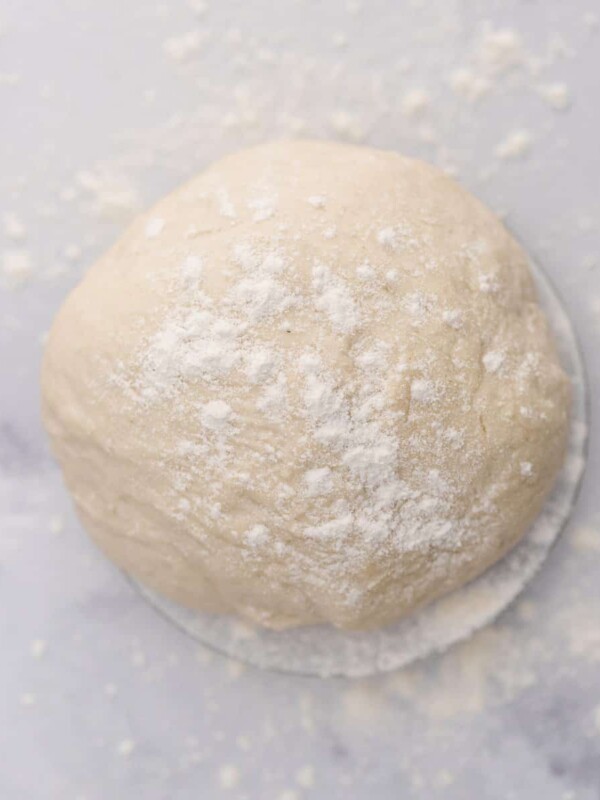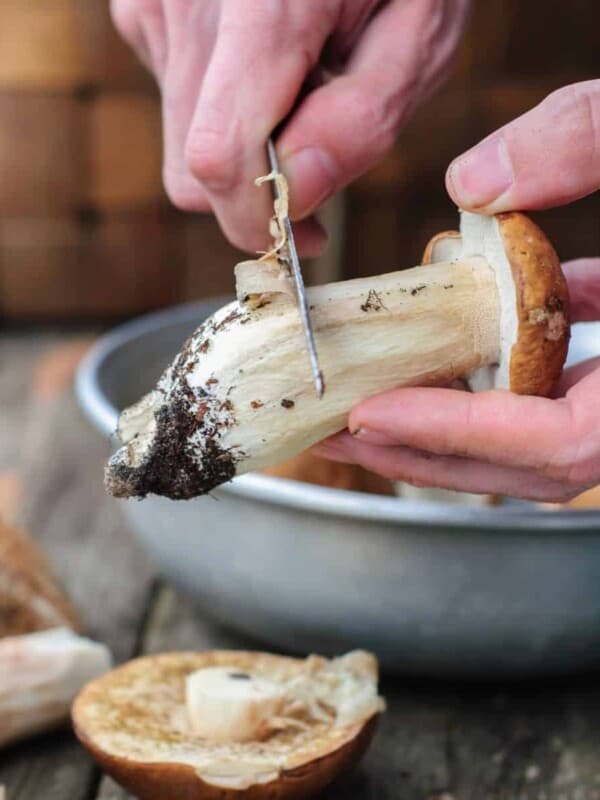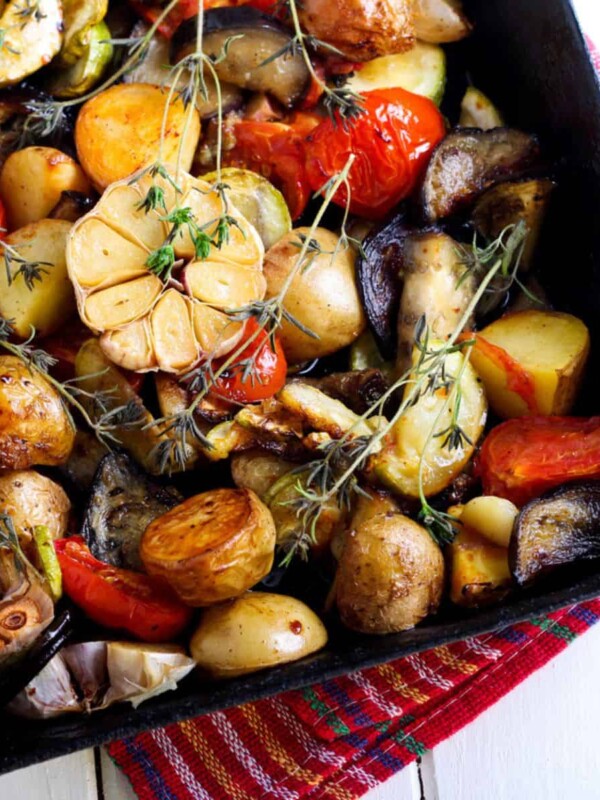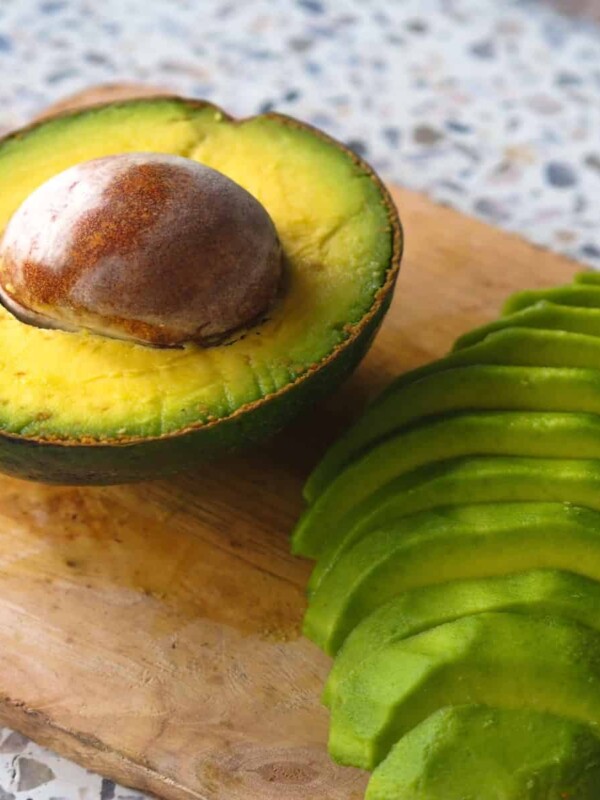This post may contain affiliate links. Please read our disclosure policy.
Most people are unaware of How to Store Potatoes; they simply place them in a dark cupboard or pantry and forget about them until they sprout and rot.
Potatoes are one of the most widely consumed vegetables. They are prepared in a variety of ways and are widely used in almost all types of cuisine. Indeed, they are regarded as the basic diet in many cultures. Whether you bake, mash, fry, or boil potatoes, you’ll end up with a delicious dish in your hands.
In comparison to most other vegetables, potatoes store exceptionally well. With the right techniques, good potatoes can be stored for several months.
Smelling the Freshness of Potatoes

How To Store Potatoes
There are several factors to consider when storing potatoes so that they stay fresh for months.
Check the Potatoes
First, separate your potatoes so that you know what you can use in the short and long term. If you notice any bruising or broken skin, use it up right away and save the unharmed potatoes for later.
Don’t wash your potatoes before storing them; the moisture invites rotting and greening, which will shorten their storage life.
Keep Them Out of the Sunlight
Potatoes shouldn’t be kept on the countertop in the open. Place them somewhere dark, like a drawer, a basket, a closet, a paper bag, or a bamboo vegetable steamer.
Potato skin will turn green when exposed to light. Green parts of potatoes taste bitter and are dangerous to consume, so discard any potatoes with widespread green areas that extend deeper than the skin.
If the green spots are small and do not extend beneath the skin, you can eliminate them and eat the rest of the potato safely.
A Crowd-Pleasing Bowl of Potatoes
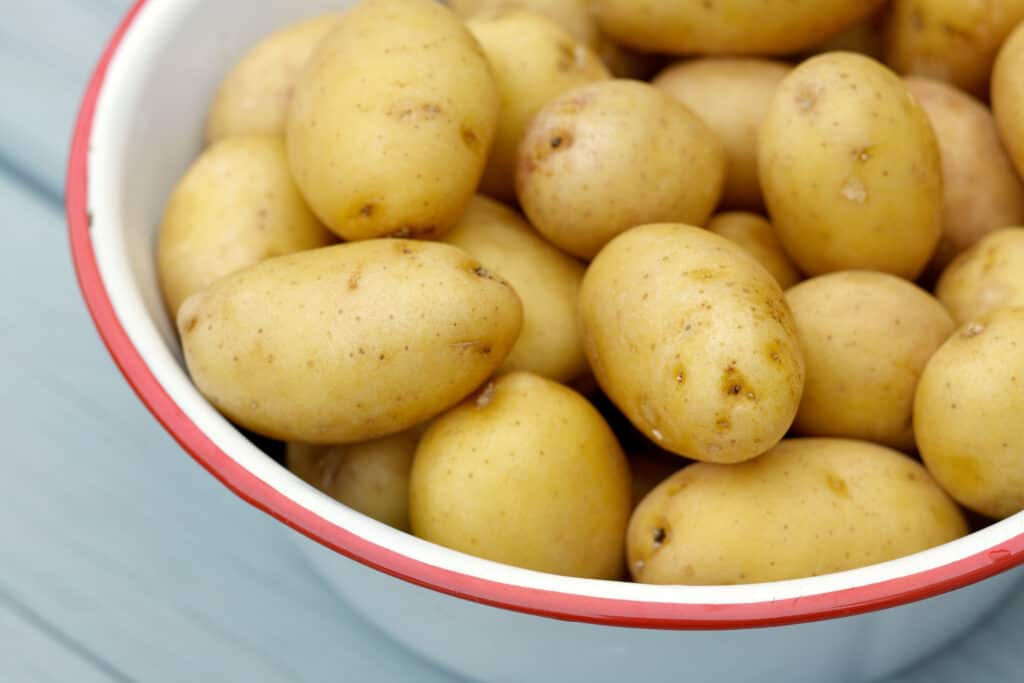
Keep Them Away From Moisture
A paper bag, basket, or large bowl is ideal for storing a pile of potatoes because they allow sufficient air circulation.
Remove potatoes from the plastic bags that you brought home from the store for longer-term storage. Plastic bags or sealed containers can trap moisture, creating a moist environment in which potatoes spoil rapidly.
Avoid Warm Spots
Avoid keeping potatoes close to the oven, under the sink, or on top of the refrigerator; instead, keep them in a cool, dry section of your kitchen.
Potatoes will sprout if the temperature is higher than their ideal storage temperature, but colder isn’t always better. If potatoes are stored at a low temperature, the starch in them will convert to sugar, affecting taste and cooking performance.
Separate Potatoes From Fruits and Veggies
Store potatoes separately from fruits and vegetables such as apples, bananas, and onions because they produce ethylene gas when stored together, causing them to ripen faster and potentially spoil rapidly.
Furthermore, storing your potatoes with onions can cause them to absorb onion flavor, which may or may not be desirable depending on the dish you’re attempting to make.
Every Potato Has A Delicious Story
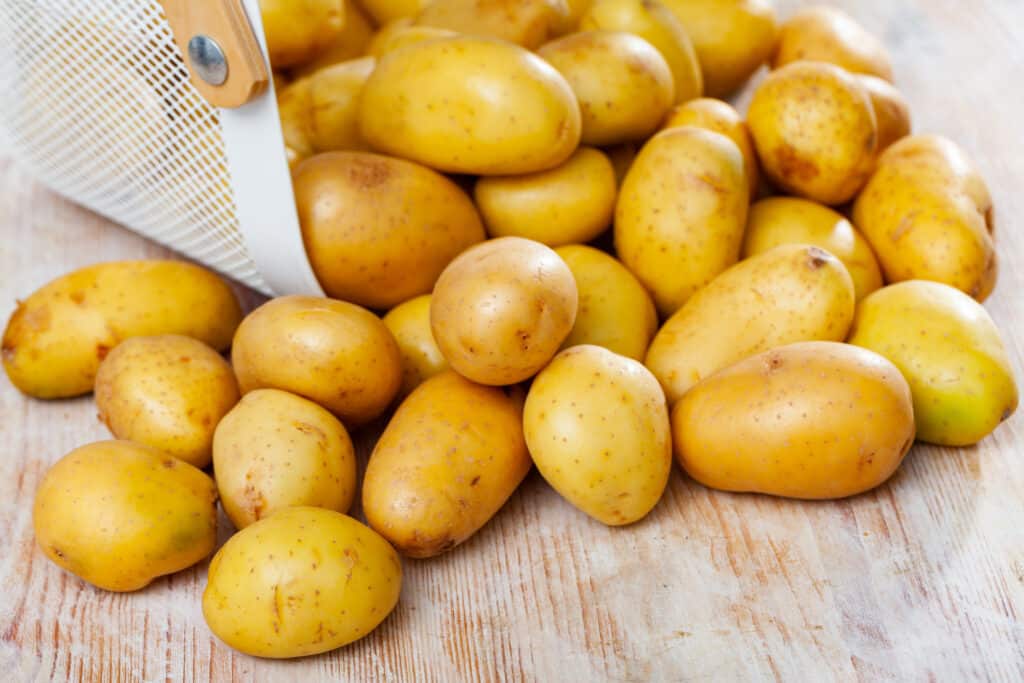
How to Store Cut Potatoes
Low temperatures, as previously stated, harm potatoes by causing them to develop a dark discoloration when cooked. They will also produce more acrylamide, which is a carcinogen.
With the exception that if your potatoes have already been peeled and cut, place them in a bowl of cool water and cover them completely. Keep them refrigerated and use them within 24 hours.
How to Store Cooked Potatoes
Refrigerate them in an airtight container, just like any other cooked food. Reheat the leftovers thoroughly and consume them within three to four days.
Potato Warning Signs
Potatoes should be mostly firm and smell lightly nutty and earthy. Toss your potatoes if they are overly soft, shriveled, or smell moldy.
Remove any green spots or sprouts, as well as any black spots that indicate bruising inside the potato. Although the bruises are not harmful, it is still preferred that you remove them.
Tips for Storing Potatoes
Check on your stash and rotate it every time you reach for a potato to avoid bruising. Check for any potatoes that are starting to go bad and use them up, placing newer potatoes on the bottom.
Sprouting is not a bad thing; it is a natural process. Simply pick out any small sprouts that you see. The potato is still edible.
When purchasing potatoes, avoid selecting any that are not firm. Softer textures are more prone to rotting, so avoid them.
Frequently Asked Questions (FAQs):
Use burlap sacks or breathable containers such as paper bags, cardboard boxes, baskets, and bowls to allow for air flow.
Potatoes can be stored in a cool, dry, dark place for 2 to 3 months after their best-before date.
The healthiest way to eat potatoes is to bake them with the skin on.
More Hacks to Try:
- How to Store Strawberries
- How to Store Mint
- Best Way To Boil Potatoes
- How To Store Spinach For One Month
- How to Store Lemon and Lime for 3 Months
- The Best Way to Store Lettuce
- How To Store Celery
- Best Way To Store Salad Greens
- Store Carrots In Water For Months Ahead!
- Boiled Eggs and Potatoes (Batata w Beid)

How to Store Potatoes
Equipment
- small mixing bowl
- medium pot
Ingredients
- 1½ pound potatoes, small
- 1 tablespoon salt
- 2 tablespoon unsalted butter, melted
- 2 tablespoon extra virgin olive oil
- 1 tablespoon kosher salt
- ½ teaspoon freshly ground pepper
- 2 tablespoon chopped parsley
Instructions
- First, wash and scrub the potatoes, then cut larger potatoes in half or quarters to make even-sized potato pieces.
- Second, cover the potatoes with an inch of water in a pot of salted water. Bring to a boil, then reduce to a low heat and cook until the potatoes are tender.
- Third, drain the potatoes and return them to the pot or a mixing bowl.
- Then, drizzle the potatoes with melted butter and olive oil.
- Moreover, season with kosher salt and black pepper to taste.
- Finally, toss with freshly chopped parsley to combine. Cover and set aside until ready to serve.

